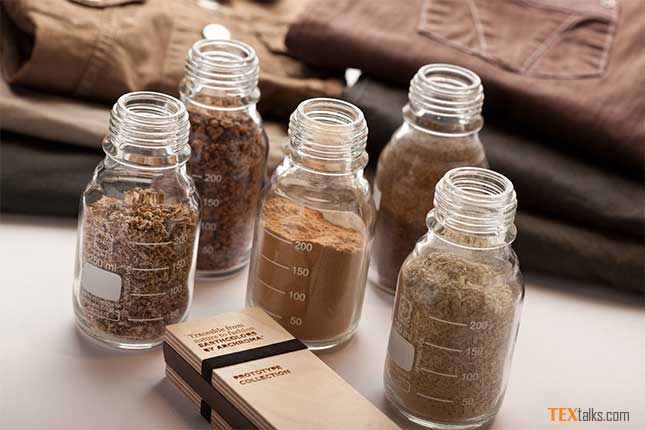Dyes, used in textiles are considered a hindrance to circularity as dyeing is one of the most polluting processes in the textile industry. Chemicals supplier Officina39 has converted cellulosic textile waste into Recycrom, a colored powder or pigment.
The company has patented the method after research that started in in2017 and the first commercial product was launched in 2019 and the company says it gained vast acceptance in 2022. The chief researcher says that the process is mechanical in which one kilo of waste cellulosic textiles is converted into almost the same quantity of pigment in powder form. Recycrom, as the dye is called, can used to dye both cellulosic and synthetics, and can also be used to print on polyester.
The limitation of the eco-friendly dye is that the color of the fabric would be lighter than the original color. Thus a black shirt would be dyed grey and a red one would be light red. Like any dyestuff, powders can be blended to obtain different nuances, either at the beginning of the process, by mixing various colors of waste material, or once in pigment form. An item dyed with Recycrom can furthermore be ‘upcycled’ several times, and at each stage, the shade will continue to lose intensity.
The advantage of Recycrom is that it turns leftover textiles into a powder, and it offers a second life to lower-grade waste that can not be recycled into yarns. Officina39 has registered several patents of Recycrom including the waste-to-powder process, the machinery, and the binder between the micronized powder and the textile. In a project with German collector and sorter ICO, Officina39 conducted trials, testing random batches, and did not find any toxic chemicals.
Research on the recycling of dyes has been going on for a long time by other companies. In 2014, Archroma introduced EarthColors, a range of dyestuffs partially made from agroindustry waste. The company has just launched a new family of dyes made from pre- and post-consumer leftover textiles, in cotton and/or nylon, which it intends to call FiberColors.
Archroma is looking to partner with brands that seek circular solutions and have access to sorted and shredded pre-and post-consumer waste. The difference between Recycrom and FiberColors is that Archroma’s technology is indifferent to the original color of the material, and the resulting sulfur liquid dyestuff does not require the addition of binders. Officina39, as seen, transforms the original color into a lighter shade, using a mechanical process, to produce a 100 percent recycled pigment.
Sales of Recycrom have been picking up. In two years, we may be able to increase sales by a factor of six, says a representative of the company. In the past three years, we have seen a big shift with brands developing longer-term projects with us, he added.
Other start-ups are also trying to produce recycled dyes from waste textiles. These include DyeRecycle, in the UK, and Induo, in France, which contend that unused fabric scraps and clothing should be exploited to the fullest.
British start-up DyeRecycle is taking the opposite path. The technology it is currently working on “selectively extracts dyes from waste fibers and transfers the dyes to a new fabric” using, it says, “non-hazardous liquids”. The decolored fabric will then be easier to recycle into a fiber and dyed.
The Hong Kong research institute of Textiles and apparel (HKRITA) has developed and patented a decolorisation process that uses high-temperature water to “drive disperse dyes out of polyester and indigo dye out of denim.



